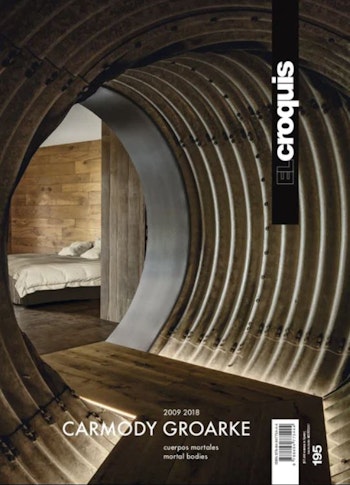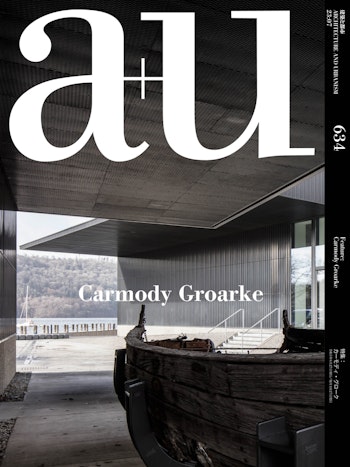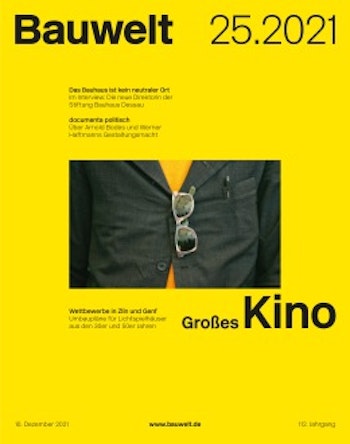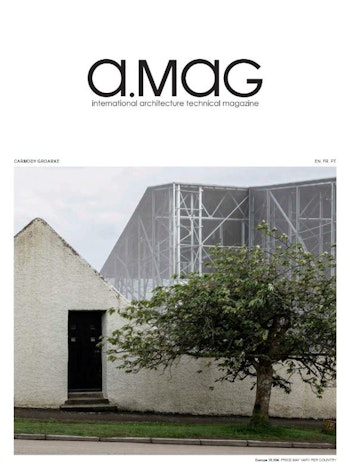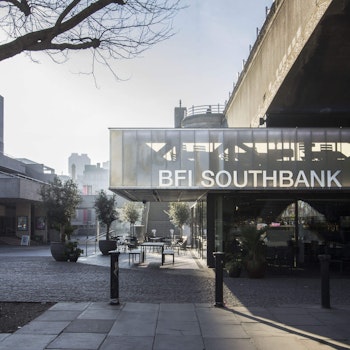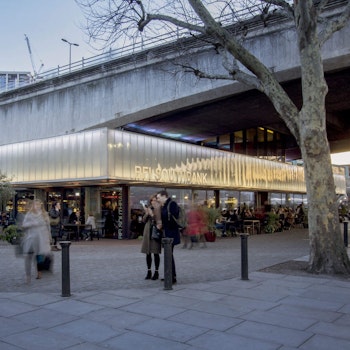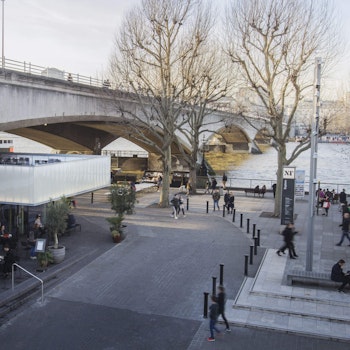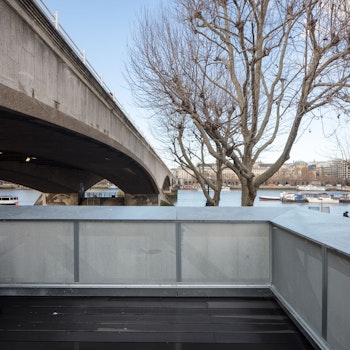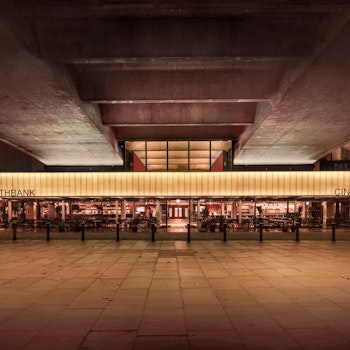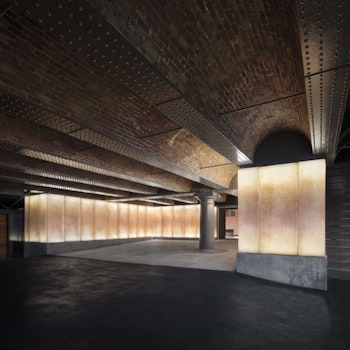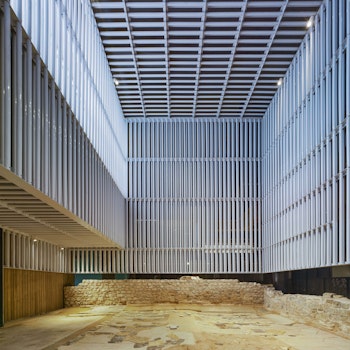ARCHITECT
CARMODY GROARKE
PUBLICATIONS a.mag, a+u, Bauwelt, El Croquis
The British Film Institute (BFI) Southbank was originally built beneath the arches of Waterloo Bridge in the 1950s to accommodates the UK’s largest independent cinema house and National Film Archive. Its prominent location facing the River Thames benefits from the footfall of the Southbank, however, given the building’s age, the public image entrance and general circulation spaces of the entire complex were tired, outdated and poorly equipped to welcome visitors.
The project announces a new identity and entrance to BFI Southbank with a grand canopy which cantilevers east and west. Maintaining the ‘caves’ of the cinemas beneath the bridge, this new pavilion becomes a landmark visible from both banks of the river and offers a generous new entrance from all sides. It increases the hospitality spaces at pavement level as well as providing a new VIP room and terrace above.
All new architectural interventions are defined inside and out through the predominant use of highly textured, cast fibreglass. As a robust material counterpoint to the aged Brutalism of Waterloo Bridge, the main canopy intervention is backlit to announce its cultural presence amongst other civic event architecture on the Southbank. The ground floor room is fully glazed with sliding doors to blur the territories between the inside and the public space of the promenade. The new upper room fitted within the gigantic concrete rib structures beneath Waterloo Bridge has created a unique 350m-long, elevated vista across the Thames.
In contrast to the exterior architecture, the interior of the new rooms are deliberately dark and broody, heightening the atmospheric qualities of a visit to the cinema and acknowledging the arts institution’s responsibility to both sub-culture as well as high-culture.
source: Carmody Groarke
YOU MAY ALSO LIKE

